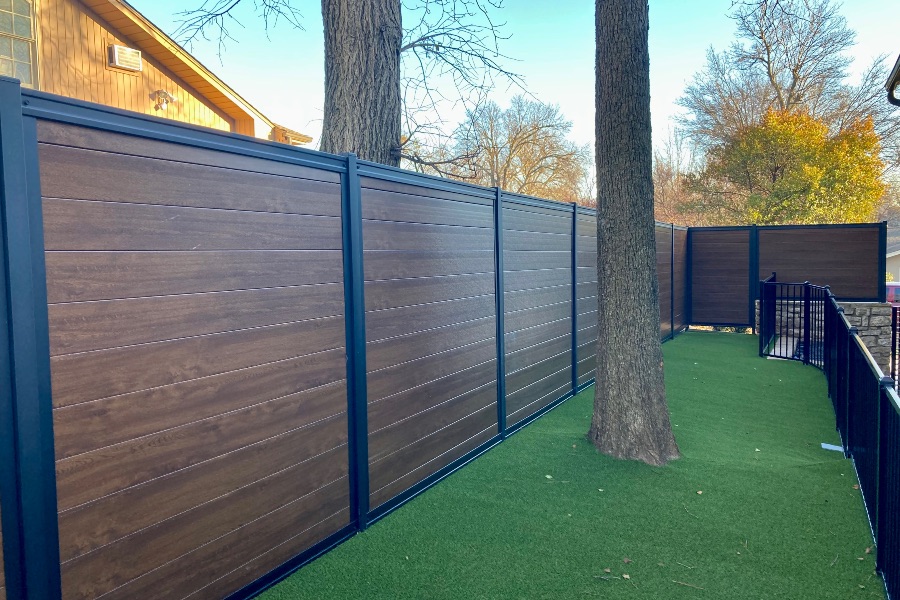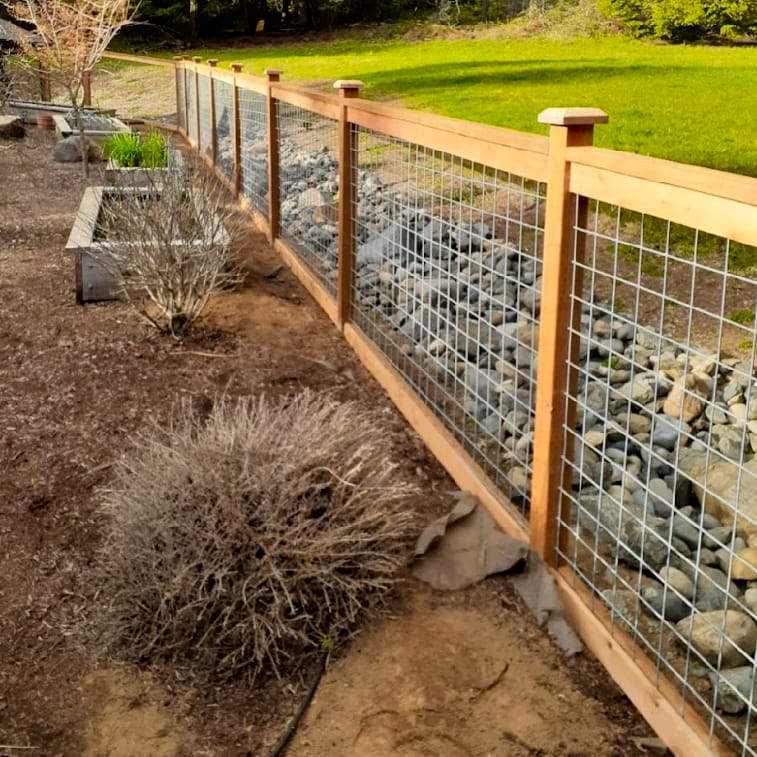All Categories
Featured
Whether it's strong winds, heavy rains, or severe heat, weather can trigger significant damage to your fence, leading to pricey repair services or also a full replacement. Below are some practical pointers to secure your fencing from weather-related damage.
Plastic Fence: Plastic is extremely sturdy and immune to moisture, decaying, and bending. It likewise requires little maintenance and can stand up to severe climate condition without fading or splitting. Metal Fence: Wrought iron or light weight aluminum fences are strong and resistant against wind and rain. They are vulnerable to corrosion over time if not correctly safeguarded. Applying a rust-resistant layer can aid maintain their look and integrity. Compound Secure Fencing: Made from a mix of wood fibers and plastic, composite fencings integrate the ideal qualities of both products. They're resistant to degeneration, rot, and bug damages while providing the appearance of all-natural timber. By picking the ideal product, you can ensure that your fence is better equipped to stand up to the components.
Dampness Protection: Sealers produce a waterproof barrier, protecting against rain from permeating into the timber and causing rot or mold. UV Security: Sealants and discolorations block UV rays, which can dry and blemish the wood. Maintain Appearance: Consistently applying a protective finish will keep the fence's all-natural appeal and prevent discoloration or fading. To ensure resilient protection, reapply sealant or discolor each to 2 years, depending upon your environment and fence wear.
![]()
![]()
Additionally, cleaning your fence can help get rid of dirt, mold, and particles that can create long-term damages. For wooden fencings, gently stress wash the surface area to remove gunk, while vinyl fencings can be cleaned up with a mild cleaning agent service.
Conclusion. Whether you're choosing the ideal products, applying protective layers, or enhancing posts, these straightforward approaches can help shield your fencing from the elements, conserving you money and extending the lifespan of your fence for years to come. Normal evaluations and upkeep are crucial to catching problems early, so be sure to stay on top of your fence's care throughout the periods.
- Pick Weather-Resistant Products. One of the initial steps in securing your fence from weather-related damages is picking the best product. Some products are naturally a lot more immune to the aspects, minimizing the requirement for constant repairs. As an example:
Plastic Fence: Plastic is extremely sturdy and immune to moisture, decaying, and bending. It likewise requires little maintenance and can stand up to severe climate condition without fading or splitting. Metal Fence: Wrought iron or light weight aluminum fences are strong and resistant against wind and rain. They are vulnerable to corrosion over time if not correctly safeguarded. Applying a rust-resistant layer can aid maintain their look and integrity. Compound Secure Fencing: Made from a mix of wood fibers and plastic, composite fencings integrate the ideal qualities of both products. They're resistant to degeneration, rot, and bug damages while providing the appearance of all-natural timber. By picking the ideal product, you can ensure that your fence is better equipped to stand up to the components.
- Safeguard Wooden Fencings with Stains and sealers. Wooden fencings are particularly prone to dampness, UV rays, and extreme temperatures. To shield your wood fencing from these concerns, applying a high-grade wood sealer or discolor is essential.
Dampness Protection: Sealers produce a waterproof barrier, protecting against rain from permeating into the timber and causing rot or mold. UV Security: Sealants and discolorations block UV rays, which can dry and blemish the wood. Maintain Appearance: Consistently applying a protective finish will keep the fence's all-natural appeal and prevent discoloration or fading. To ensure resilient protection, reapply sealant or discolor each to 2 years, depending upon your environment and fence wear.

- Enhance the Fencing Posts. To prevent this, think about reinforcing your fence articles by installing concrete grounds or using more powerful materials for blog post anchors. If you live in a location with heavy winds or seasonal frost, this added stability will help protect your fence from damage.
- Trim Surrounding Vegetation. Tree branches and vines growing near or over your fence can cause substantial damage in thundercloud. Strong winds or heavy snow can trigger branches to damage, falling onto your fencing and breaking panels or damaging blog posts. Frequently cut any type of looming branches or slipping vines to stop them from creating concerns. Not just will this shield your fencing, but it will likewise improve the overall look of your lawn.
- Usage Windbreaks. Wind is a significant factor in weather-related fencing damage. Strong gusts can compromise or also fall fences, particularly if they're tall or not correctly strengthened. One method to minimize wind effect is by mounting a windbreak. This can be as easy as growing shrubs or trees near your fencing or establishing up a mesh display. A windbreak serves as a barrier that reduces the straight effect of wind undecided, stopping damage from high winds and gusts.

- Address Water Drainage Issues. Poor drainage is a major contributor to fence damage, especially for wood fences. Water that collects around the base of fence posts can cause them to rot over time.
- Normal Inspections and Upkeep. Regular upkeep is vital for shielding your fence from weather condition damage. Evaluate your fencing frequently, specifically after severe weather occasions, to recognize any indications of damage. Look for loosened boards, leaning articles, or rust on metal elements. Capturing little troubles early can prevent them from becoming bigger, extra pricey repairs.
Additionally, cleaning your fence can help get rid of dirt, mold, and particles that can create long-term damages. For wooden fencings, gently stress wash the surface area to remove gunk, while vinyl fencings can be cleaned up with a mild cleaning agent service.
- Apply a Rust-Resistant Finish to Steel Fencings. Metal fences, specifically those made of iron or steel, are prone to corrosion when exposed to moisture and humidity. To safeguard your steel fence from corrosion, use a rust-resistant finishing or paint.
Conclusion. Whether you're choosing the ideal products, applying protective layers, or enhancing posts, these straightforward approaches can help shield your fencing from the elements, conserving you money and extending the lifespan of your fence for years to come. Normal evaluations and upkeep are crucial to catching problems early, so be sure to stay on top of your fence's care throughout the periods.
Latest Posts
Chill, Sip, and Enjoy at Shake Street
Published Apr 28, 25
2 min read
Specials & Discounts: Unlock Discounts on Vehicle Maintenance at Montclare Auto Repair
Published Apr 28, 25
2 min read
Budget Friendly Fence Solutions with Montana Fence Financing
Published Apr 27, 25
1 min read